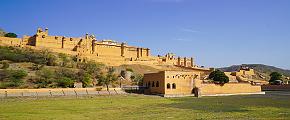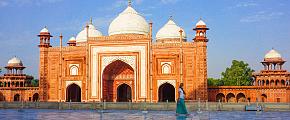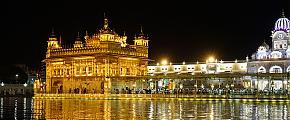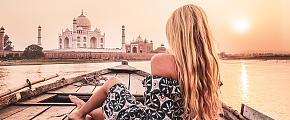8 Most Famous Festivals Celebrated in India
India is a country full of religious culture, so Indian festivals are full of religious color. India has a variety of festivals, and people will hold grand ceremonies and celebrations to celebrate each festival. These Indian festivals encapsulate the traditional culture of India and attract many tourists to attend them on their India trips.
Holi
Holi is one of India's best-loved festivals and is an ancient custom that has been passed down to this day. To celebrate the arrival of spring, people throw colored powders and paints at each other, dance, and have water fights with reckless abandon. In Hindu norms, which emphasize the caste system, this is the only day when people can forget about caste and class differences, throw wine and colorful paint at each other and spend the festival together as equals.
Traditionally, the festival is celebrated by dabbing colored powder on the foreheads of the participants as a sign of blessing. In practice, the festival is now marked by grabbing the powder and throwing it at each other or even by holding water-cooler guns, water balloons, and buckets of water and coloring everyone from head to toe. The colorful powder has four primary colors: red, yellow, green, and rose. For Indians, red symbolizes marital harmony, yellow is auspicious, green represents new beginnings and a good harvest, and saffron is often associated with strength.
In India, the traditional Holi festival lasts for two days. On the first day, the Holika Dahan ceremony is celebrated with bonfires and food to celebrate the death of Holika, the embodiment of evil as recorded in the books of past lives. On the second day, the carnival of colors is associated with a romantic legend of love. Krishna, whose skin had been turned blue-black by suffering, had the courage to woo her beloved by applying paint to another person's face. This act is imitated to commemorate love and is the climax of the Holi festival atmosphere. It is appropriate to wear white clothes for the festival, which gives a unique artistic effect.
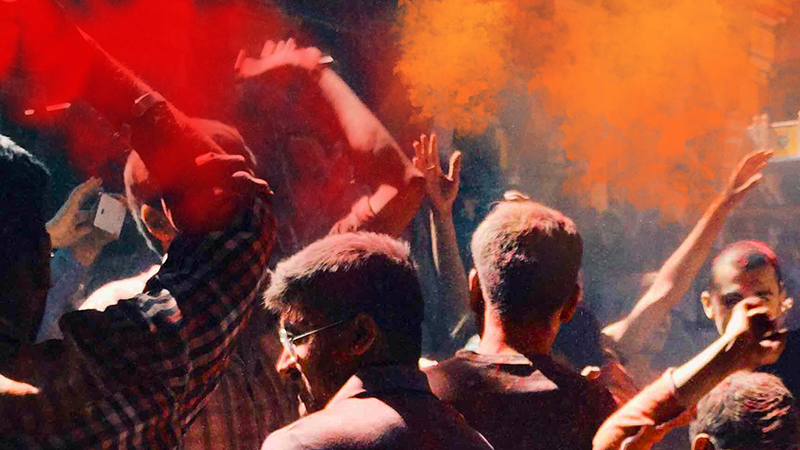 Holi Festival
Holi Festival
Diwali
Diwali is one of the most popular ethnic and cultural festivals in India. Diwali is a festival to celebrate light. It symbolizes the victory of light over darkness and good over evil. Therefore, it is also called the Festival of Lights. Diwali is an important cultural festival during the months of October or November each year, showcasing Indian culture and beliefs. Diwali has become a viral event, and people perform various celebration performances on this day.
Diwali is also known as the Hindu New Year because it is a festival based on the Hindu calendar. It is on the last day of the Hindu calendar, so the date is not fixed. The festival lasts five days in total. During this festival, rows of oil lamps or candles are placed in houses, windows, and other places to drive away the darkness and pray for light. The important decoration of Diwali is light. Every house is decorated with beautiful lights and flowers during the festival. Indians have rows of lights or candles in front of their homes, windows, and balconies. During Diwali, rooms are also cleaned to show respect for the gods. People put on new clothes, determined to start a new life. At dusk, Indian families light oil lamps in anticipation of Diwali. And Indians exchange gifts during Diwali. During Diwali, merchants decorate their storefronts with colorful lanterns hanging from the roof to the ground. They are paired with Indian flower strings to light up the lights to welcome wealth. At night, even poor people living in slums or street shacks light an oil lamp in front of their door, hoping that Lakshmi, the goddess of wealth, wisdom and luck, will change their fate.
The origin of Diwali is that some people believe that Lakshmi, the Indian goddess of wealth, visits the earth on this day and that whichever house she sees will be blessed with wealth. Some people believe there is a connection with the Indian epic poem, the Ramayana. According to the poem, Prince Rama finally defeated the rival king Ravana and returned to the capital with his wife, Sita. When he entered the city in the evening, all the lights were lit by the city's people to celebrate Rama's triumph, and after that, lamps were lit on the same day every year to celebrate Rama's victory. Based on the date of the celebration, Diwali may have been an ancient Hindu harvest festival.
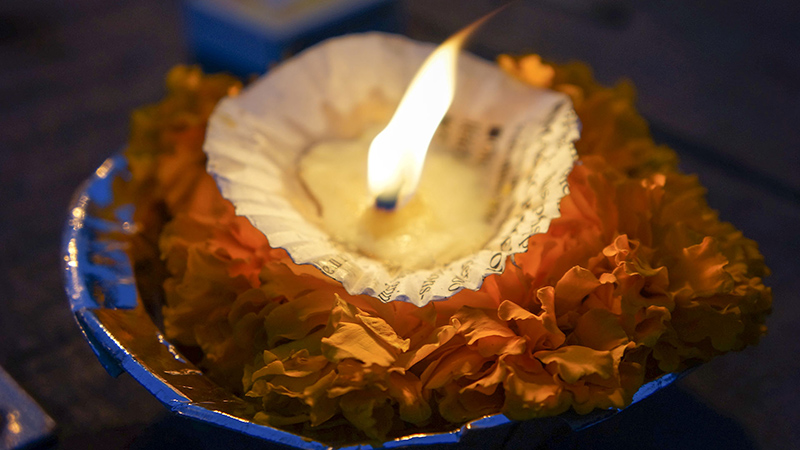 Diwali Lamp
Diwali Lamp
Ganesh Chaturthi
Ganesh Chaturthi is one of India's major annual religious festivals. The 10-day celebration of Ganesh Chaturthi commemorates the birth of the god Ganesh Chaturthi, who symbolizes prosperity and success.
In India, people worship Ganesh before performing any activity. Hindus worship Ganesh before ceremonies, marriages, pilgrimages, long trips, school starts and shop openings. He is the patron saint of families in India. The image of the elephant god is elephant-headed, human, and naive. This, coupled with the fact that he is seen as a symbol of wealth, wisdom, good fortune, and prosperity in Hinduism, makes him famous and one of the most popular gods in India.
In India, the festival is celebrated yearly at the end of the rainy season. The festival begins according to the Hindu calendar (lunar calendar), so the timing varies slightly from year to year. Every Hindu family offers flowers, sweets, and oil lamps during Ganesh Chaturthi. An image of the elephant god is placed on the altar and worshipped daily with devotion and chanting. After the rituals, the devotees take the idol to a nearby river and put it there, signifying a return to nature.
Onam
Onam is a 10-day Hindu harvest festival that originated in the Kerala region of India and is now celebrated by Hindus worldwide. Onam is the biggest festival of the year in Kerala. The purpose of this festival is to honor the mythical king Mahabali and to celebrate the harvest. It is a great festival to experience in India as it is full of joy, excitement, and enjoyment for all ages. People decorate the front of their houses with beautiful flower designs called Pookalam. Pookalam is used to show the prosperity and beauty of the Onam festival symbol and welcome their king.
Onam has grand processions, boat races, and traditional folk dances. The leading food eaten during the celebrations is Onam Sadhya, a vegetarian dish on banana leaves. The feast contains a variety of words that are celebrated with great enthusiasm.
Eid Al Fitr
Eid Al Fitr in India is a joyous three-day celebration. Eid Al Fitr is the first day of the ten months of the Islamic calendar. The festivities begin with the sighting of the new moon. Each year, Eid Al Fitr is celebrated approximately ten days earlier than the previous year. On the morning of the first day of Eid, Muslims perform prayers to thank God for enabling them to complete Ramadan. In India, the Jama Masjid in Delhi can accommodate up to 20,000 people during the Eid prayers. Delhi celebrates Eid Al Fitr with great enthusiasm. In this city, people will gather for prayers at Jama Masjid, one of the most famous mosques in India. The famous Haji Ali is one of the best places in Mumbai to witness the Eid celebrations. After prayers, many heads to Muhammad Ali Road to experience desserts and delicious dishes. The entire city of Srinagar also celebrated Eid with great joy. Srinagar is one of the must see attractions during this time as the buildings are decorated and the streets are filled with happy people. The city also has the famous Hazratbal Mosque, where many devotees will pray.
For visitors, eating the unique Eid dishes is the best experience of this festival. Eid Al Fitr serves all the sweet and savory food during the celebrations. Women can draw traditional Mehndi designs on their hands and feet using a brown dye that fades, and there are a variety of patterns to choose from.
Durga Puja
Durga Puja has been inscribed on the UNESCO Representative List of the Intangible Cultural Heritage of Humanity in 2021. As a religious festival, Durga Puja has been signed as an Intangible Cultural Heritage, due to the significant influence of the festival and the universality of its participation, mainly due to the importance of the goddess Durga and the celebration of her victory over the demon king Mahasura. Durga Puja is celebrated according to the Hindu calendar, so every year, it is celebrated at a different time from the solar calendar.
Every house is decorated with lights, everyone wears new clothes, and there are huge parties and parades in the evenings. Everyone, regardless of age, gender, or religion, participates in the preparations and festivities. In Kolkata, a city of 10 million people, over 20,000 temporary pandals are dedicated and colorfully decorated. During the festival, married women also put vermilion on each other's faces to wish each other a happy marriage.
The festival begins at Mahalaya, marking the arrival of Durga during this festival. The second to fifth days mark the commemoration of the goddess and her avatars such as Kumari (goddess of fertility), Mai (mother), Ajima (grandmother), Lakshmi (Goddess of wealth), known as Navadurga. On the sixth day, called Sashthi, people welcome the goddess and begin festival celebrations. On the seventh day (Saptami), eighth day (Ashtami) and ninth day (Navami), the goddess is honored along with Lakshmi, Saraswati, Ganesh and Kartikeya.
On the last day of Durga Puja, the statue of the goddess Durga is carried in procession and finally thrown into the Ganges or sea, symbolizing the goddess's triumphant return.
Maha Shivratri
Maha Shivaratri is a festival held in honor of the Hindu god Shiva. This day is considered the day of the marriage of Lord Shiva and Parvati and has an important place in Hindu culture. Unlike most Hindu festivals, which are celebrated during the day, Maha Shivaratri is celebrated at night. Devout Hindus fast and vigil on this day, chanting scriptures praising Lord Shiva throughout the night and fasting and sacrificing. Many religious people feel the energy of Shiva on this day through yoga, meditation, and other means. Unlike most Hindu festivals that include cultural revelry, Maha Shivaratri is solemn.
Gurupurab
Gurpurab is a festival held in honor of Guru Nanak, whose birth anniversary has special significance because Sikhs believe that Guru Nanak brought enlightenment to the world. It liberated the masses from their minds. The celebrations usually last for three days. The celebrations include processions and performances, exposition of scriptures, and chanting hymns.
These festivals are a true reflection of Indian culture and life. Indian people celebrate festivals enthusiastically and face life with optimism, which is one of the characteristics of India. Participating in festivals is an essential channel for tourists to contact and communicate with local people, experience local life and customs, and learn about Indian culture. If you are interested in experiencing some of the traditional Indian festivals via a tour to India, feel free to let us know. One of our travel experts will tailor an itinerary based on your interests and needs.

